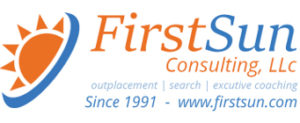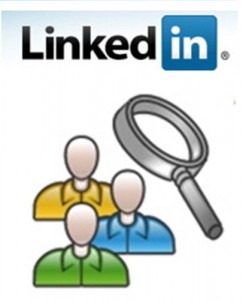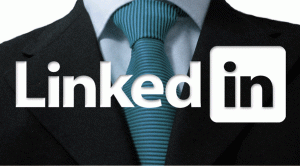#JobSearch : After Losing Your Job…7 Tips for Job Searching Success.
Everything has been going along just fine with your career—nothing exciting, but things are stable. But, are they really stable? Do you know what’s around the next corner in your company? And, are you established enough in your career just in case something does happen?
Most companies, many industries, and the economy, in general, are constantly evolving. What does this mean as a worker in this twenty-first century? It means that you have to be prepared for uncertainty and a potential job change.
As a Certified Professional Resume Writer (CPRW), I have partnered with over 1,000 clients in developing forward-thinking, eye-catching, and industry-appropriate resumes and cover letters. Unfortunately, many of those clients contact me only when they have lost their jobs and need to quickly rework a 20+-year-old resume or are starting with no documentation.
Along with needing a new resume, there are other things to consider if you lose your job.
#1 – Don’t be ashamed of the job loss. First, job loss can happen to anyone. Companies, merge, businesses close, and organizational needs change. Tell people that you are actively seeking new employment opportunities. Did you know that most jobs are found via networking and existing contacts? It’s a much better way to find a job then replying to hundreds of job postings online.
#2 – Be sure your resume is up-to-date. Although it was mentioned before, it deserves repeating. If you have let others know that you are seeking a new job and they ask for your resume, it doesn’t look good to make them wait for an updated document. Be sure to include your most recent job and know that you don’t have to list why you left that particular position.
Quick note, even if you update your resume with above, today’s resume is more complexed than it was one year ago. You must have keywords that are picked up today by AI systems & algorithms.
Like this Article? Share It! You now can easily enjoy/follow/share Today our Award-Winning Articles/Blogs with Now Over 2.5 Million Growing Participates Worldwide in our various Social Media formats below:
LinkedIn: https://www.linkedin.com/in/chris-g-laughter-b46389198/
Facebook: http://www.facebook.com/pages/First-Sun-Consulting-LLC-Outplacement-Services/213542315355343?sk=wall
Twitter: Follow us @ firstsunllc
Best Daily Choice: Follow the Best of FSC Career Articles/Blogs @
https://twitter.com/search?q=bestoffscblog&src=typeahead_click
Question: Want the ‘the best/current articles/blogs on the web’ on Job Search, Resume, Advancing/Changing your Career, or simply Managing People?
Answer: Simply go to our FSC Career Blog below & type(#career, #leadership, #life) in Blog Search: https://www.firstsun.com/fsc-career-blog/
What Skill Sets do You have to be ‘Sharpened’ ?
Continue of the article:
#3 – Get a new email address. Many of us are tied to our job email address, which is obviously gone if you have lost your position. And, home email addresses could be checked by multiple people in the household. Instead, open a new email account that is used specifically for job hunting. Then, you can be sure you will be the only one checking the email account. And, always use your name or a portion of your name as the email address. Don’t use your graduation year, birth year, or other information that could detail your age. Keep it professional and simple.
#4 – Join LinkedIn as your preferred social media outlet. LinkedIn is a professional resource for social media content, updates, company profiles, and job searching. If you already have Facebook, Twitter, and other profiles, then be sure there is nothing out there that could harm your job search. While it is true that everyone has a personal life, it is also true that a quick Google search of your name will generate hits on your social media profiles.
#5 – Attend networking events. Again, most people find job opportunities through contacts they know. If you can attend a local chamber of commerce expo or a local networking group, take the chance and do so. And, if those aren’t available to you, then schedule a lunch appointment with a contact you haven’t seen for awhile. The more people that know you are seeking opportunities, the more eyes and ears are out there assisting you with your job search.
#6 – Never badmouth your ex-employer. Never. Ever. Do. This. Have you ever heard the saying, ‘don’t burn your bridges?’ Well, this rings true when seeking employment. The more you badmouth your ex-employer, the more you are viewed as a critical, sad, and annoying ex-employee. Furthermore, you never know who may know the people and/or company that you are criticizing. It doesn’t matter if what you are saying is true—just don’t do it.
#7 – Take on part-time work, freelance projects, or volunteer opportunities. If you are unsure of your career direction or can’t seem to find the perfect full-time job opportunity, then grab the chance to volunteer with an organization close to your heart, find a part-time opportunity that meets your family needs, or be open to the idea of freelance work. These short-term gigs show future employers that you kept busy during your time away from the full-time workforce and still honed your skills while networking with entirely new groups of people.
Remember that you are not the first person to lose their job and you certainly won’t be the last. By keeping a positive attitude, being proactive, and establishing a network of people that are also seeking opportunities for you, you can be on your way to a new opportunity that may meet your needs even better than your previous position.
FSC Guest Author: Dr. Heather Rothbauer-Wanish has a BBA in management from the University of Wisconsin-Eau Claire, an MBA from Lakeland College, and a Ph.D. in Organization and Management from Capella University. She LOVES helping people position themselves for today’s job market. She can help boost your confidence by creating a resume that helps you land your DREAM JOB. Visit her website @ https://www.feather-communications.com
FSC Career Blog | March 29, 2020 | FSC Guest Author, by







